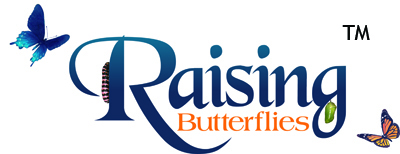Chlosyne palla flavula

Photo Life History: Chlosyne palla flavula
Habitat: Mountain Canyons; Mountain Hilltops
Host Plants: Aster engelmannii
Suitable Lab Host Plants:
Caring for Live Female Butterflies: Feed females regularly.
Methods of Female Oviposition: Portable Cages.
How to Find Eggs: Females lay eggs in large clutches on host plants. Look on the ventral side of leaves towards the lower portion of the host plant. The easiest way to raise this butterfly, however, is to get eggs out of females.
How to Hatch Eggs: Consolidate eggs into one container.
How to Find Caterpillars in the Field: To find gregarious pre-diapause larvae, look for webbing (almost like a spider web) on the plant. Post-diapause larvae can occasionally be found either resting at the base of the host, off the plant altogether, or feeding on host plant flowers or leaves. Finding larvae in the field can be difficult because of how common the host plant is.
Caterpillar setups: For pre-diapause larvae, I recommend using the open terrariums or open bucket technique. Overcrowding is not generally an issue since larvae are gregarious in nature. For post-diapause larvae, see Post-Hibernation Strategies below.
Larva to Pupa: Caterpillar silks to leaf or twig; creates and attaches cremaster; hanging as a J before pupating.
Number of Broods per Year: 1
Overwintering Stage: Third or Fourth Instar Larva.
Overwintering Strategies: Your Own Backyard.
Post-Hibernation Strategies: When you feed post-diapause larvae after overwintering, if you're only rearing a few caterpillars, I highly recommend isolating caterpillars from sibling caterpillars using the twin cup method (or similar) in order to avoid re-diapause--an extremely common situation with checkerspots. (See this video for more information on the twin cup method.)
Avoiding Diapause Techniques: Expose larvae to 24 hours of light (Jacque Wolfe reports that by exposing pre-diapause larvae to 24 hours of light, a few will bypass hibernation.)
Disease Prevention: For post-diapause larvae, change out host plant and remove frass every two to three days using the twin cup method.
Emergence: Emergence Container
Field Notes: Jacque Wolfe recommends exposing post-diapause larvae to 24 hours of light and cold overnight temperatures to avoid re-diapause. I believe that some post-diapause checkerspots re-diapause when there is too little host to feed too many caterpillars. (They tend to disperse in nature). Checkerspot larvae that DO re-diapause do not necessarily need to go through a lengthy cold season to initiate feeding again. I have had luck placing re-diapause checkerspot larvae in the refrigerator for one month and then bringing them out again. Many times they initiate feeding again.

